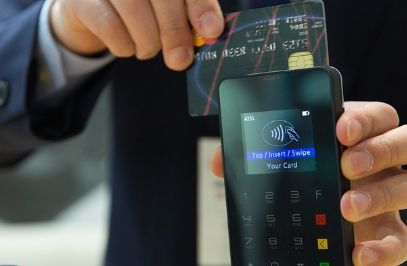Understanding Cross-Border Payments: Navigating Complexities in Global Transactions
Cross-border payments are transactions where money is transferred between entities in different countries. These payments are essential for global trade, allowing businesses, consumers, and governments to send and receive funds internationally. As globalization increases, the efficiency, cost, and speed of cross-border payments become pivotal. This article delves into how cross-border payments work, the challenges involved, and emerging technologies improving these transactions.

How Cross-Border Payments Work
Cross-border payments involve multiple parties and steps to transfer funds from one country to another:
1. Initiation: A payer initiates the payment using a bank or a payment service provider in their home country.
2. Intermediaries: Often, more than one intermediary, such as correspondent banks, is involved to facilitate the transfer between the payer's bank and the recipient's bank.
3. Currency Exchange: Transactions typically require currency conversion, using exchange rates provided by the banks or specialized foreign exchange services.
4. Clearing and Settlement: The transfer goes through domestic and possibly international clearing systems before final settlement in the recipient's account.
Common Methods for Cross-Border Payments
• Wire Transfers: Utilize networks like SWIFT for secure and reliable but sometimes expensive and slow transfers.
• Banking Cards: Credit and debit cards provide an easy way to make international purchases, although they may incur high fees.
• Online Payment Platforms: Services like PayPal, Alipay, and others offer more streamlined cross-border payment solutions, often with lower fees and simpler user interfaces.
• Cryptocurrency Transactions: Digital currencies like Bitcoin provide an alternative by facilitating direct cross-border payments without the need for traditional banking systems.
Challenges in Cross-Border Payments
• High Costs: Fees for currency conversion, along with processing fees charged by intermediaries, can significantly increase the overall cost of transactions.
• Speed: Traditional methods can take several days due to the involvement of multiple banks and clearing systems.
• Regulatory Complexity: Compliance with multiple countries’ regulations regarding anti-money laundering (AML), counter-terrorism financing (CTF), and sanctions can complicate transactions.
• Currency Risk: Fluctuations in currency exchange rates can affect the amount finally received by the beneficiary.
Technological Advancements Improving Cross-Border Payments
• Blockchain and Distributed Ledger Technology (DLT): These technologies promise to reduce costs and increase the speed of cross-border payments by eliminating the need for intermediaries and providing real-time transaction tracking.
• APIs (Application Programming Interfaces): Financial institutions use APIs to create smoother, faster, and more integrated payment systems that can automatically handle conversions and compliance checks.
• Fintech Innovations: Companies like TransferWise (now Wise) and Revolut use peer-to-peer networks and currency pools to offer cheaper and faster international payments.
Best Practices for Efficient Cross-Border Payments
• Choose the Right Method: Depending on the urgency, amount, and frequency of payments, select the most suitable payment method.
• Understand the Fees: Be clear about all the fees involved from both sending and receiving ends.
• Manage Currency Risks: Use hedging strategies or agree on currency clauses in contracts to manage exchange rate volatility.
• Stay Compliant: Ensure adherence to all relevant regulations in both the sending and receiving countries.
Conclusion
Cross-border payments are a vital part of international commerce, and understanding how to manage these payments efficiently is crucial for businesses operating globally. As technology evolves, it presents opportunities to overcome traditional challenges associated with cost, speed, and regulatory compliance. Staying informed about new payment technologies and regulatory changes can help businesses and individuals optimize their international payment strategies for better security, efficiency, and cost-effectiveness.
Related articles

 WeChat of CBiBank
WeChat of CBiBank